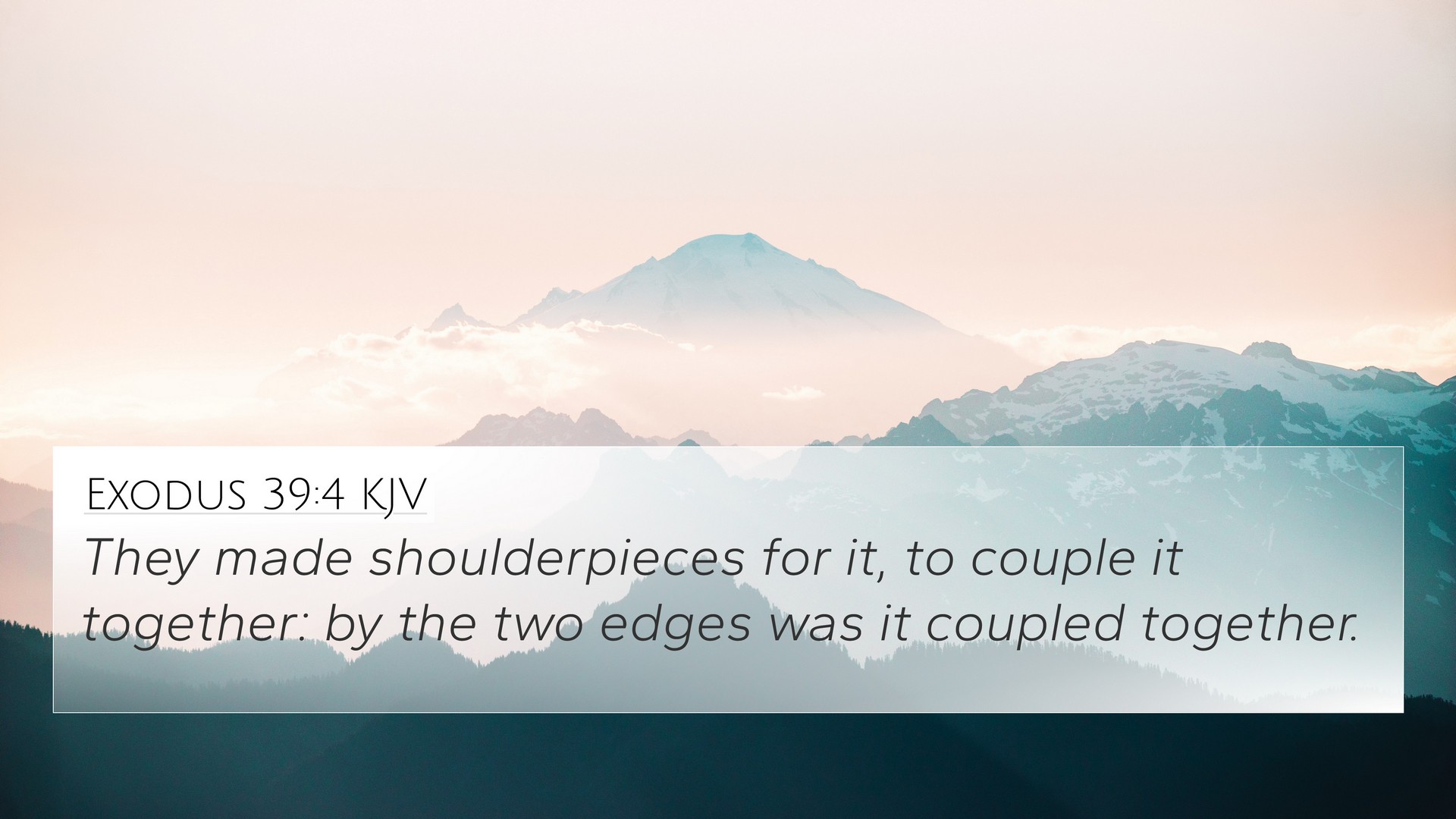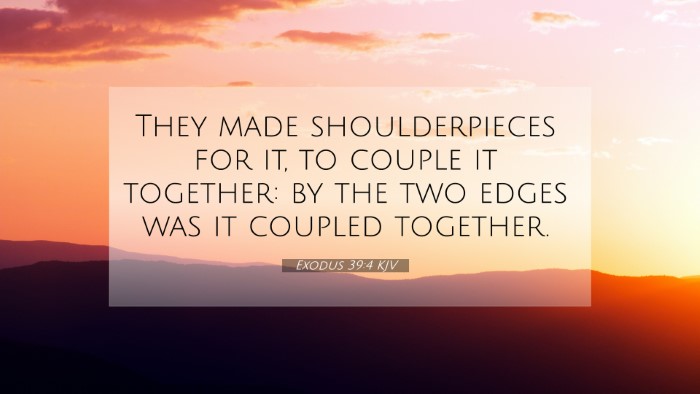Understanding Exodus 39:4
Exodus 39:4 states, "And they made four boards for the corners of the tabernacle, of shittim wood, standing up." This verse is part of the detailed instructions regarding the construction of the Tabernacle, showcasing the meticulous attention to detail given in the work of God's dwelling place. It reflects the importance of structure and the majesty of God's chosen sanctuary.
1. Context and Overview
The Book of Exodus provides a narrative of the Israelites' escape from Egypt and their journey to the Promised Land. Within it, the construction of the Tabernacle is pivotal, representing the presence of God among His people. The details of the construction emphasize the holiness and sanctity required for this dwelling place.
2. Significance of the Tabernacle
- Divine Instruction: Moses received precise instructions from God on how to build the Tabernacle, highlighting the importance of obedience and reverence in worship.
- Symbol of God's Presence: The Tabernacle served as a physical manifestation of God's presence, reminding the Israelites of His nearness and their covenant relationship.
- Preparation for Worship: The construction detailed in Exodus prepares the people not just physically, but spiritually, to meet with God.
3. Insights from Public Domain Commentaries
Matthew Henry notes that the four boards for the corners signify strength and stability, essential characteristics for a structure meant to house the holy presence of God. The use of shittim wood symbolizes incorruptibility and lasting strength, which reflects God's eternal nature.
Albert Barnes emphasizes the craftsmanship involved in the construction, indicating that it was not merely an act of construction but a worshipful activity that required skill and dedication. He draws attention to how each piece of the Tabernacle had a specific purpose and meaning, contributing to the overall design characterized by harmony and beauty.
Adam Clarke discusses the implications of the materials used and their symbolic significance, including the choice of shittim wood, which is a lasting and durable material, representing the enduring nature of God’s covenant with His people. Clarke also reflects on the spiritual lessons the Tabernacle offers regarding setup, order, and the community's role in divine service.
4. Bible Verse Cross-References
When studying Exodus 39:4, a strong network of cross-references enhances the understanding of the themes involved. The following verses offer connections that deepen the insight into the verse:
- Exodus 26:15-30: Describes the framing of the Tabernacle, elaborating on the materials and structure.
- Hebrews 9:1-5: Discusses the Tabernacle as a foreshadowing of the heavenly realities.
- 1 Chronicles 28:11: Relates to the plans for the temple being given by God to David, paralleling the Tabernacle's instructions.
- Matthew 1:23: "Emmanuel" signifies God's ultimate dwelling with humanity in the form of Jesus, connecting to the purpose of the Tabernacle.
- Acts 7:44: Refers to the Tabernacle in the context of Israel's wilderness journey and God's faithfulness.
- Revelation 21:3: Proclaims God dwelling among His people, fulfilling the promise of His presence that began with the Tabernacle.
- 2 Corinthians 5:1: Compares our earthly bodies to a temporary tent, emphasizing the transitory nature of physical structures.
5. Thematic Connections
The Tabernacle's design and purpose reflect various themes found throughout the Scriptures. It presents a model of God’s desire for relationship with humanity, the importance of holiness, and the role of worship in maintaining that relationship. The craft of constructing the Tabernacle also signifies collaborative endeavor among the Israelites, which teaches about community and collective worship.
6. Conclusion
In conclusion, Exodus 39:4 invites reflection on the nature of God's presence, the significance of obedience in worship, and the beauty of community service. By engaging with public domain commentaries and cross-referencing other Scriptures, one can uncover the profound layers of meaning within this verse and its implications for understanding God's overarching narrative in the Bible.
7. Further Exploration
To dive deeper, individuals may explore how to find cross-references in the Bible using tools such as Bible concordances or study guides. Understanding the links between the Old and New Testaments is crucial for believers desiring to see the full tapestry of God's revelation.


